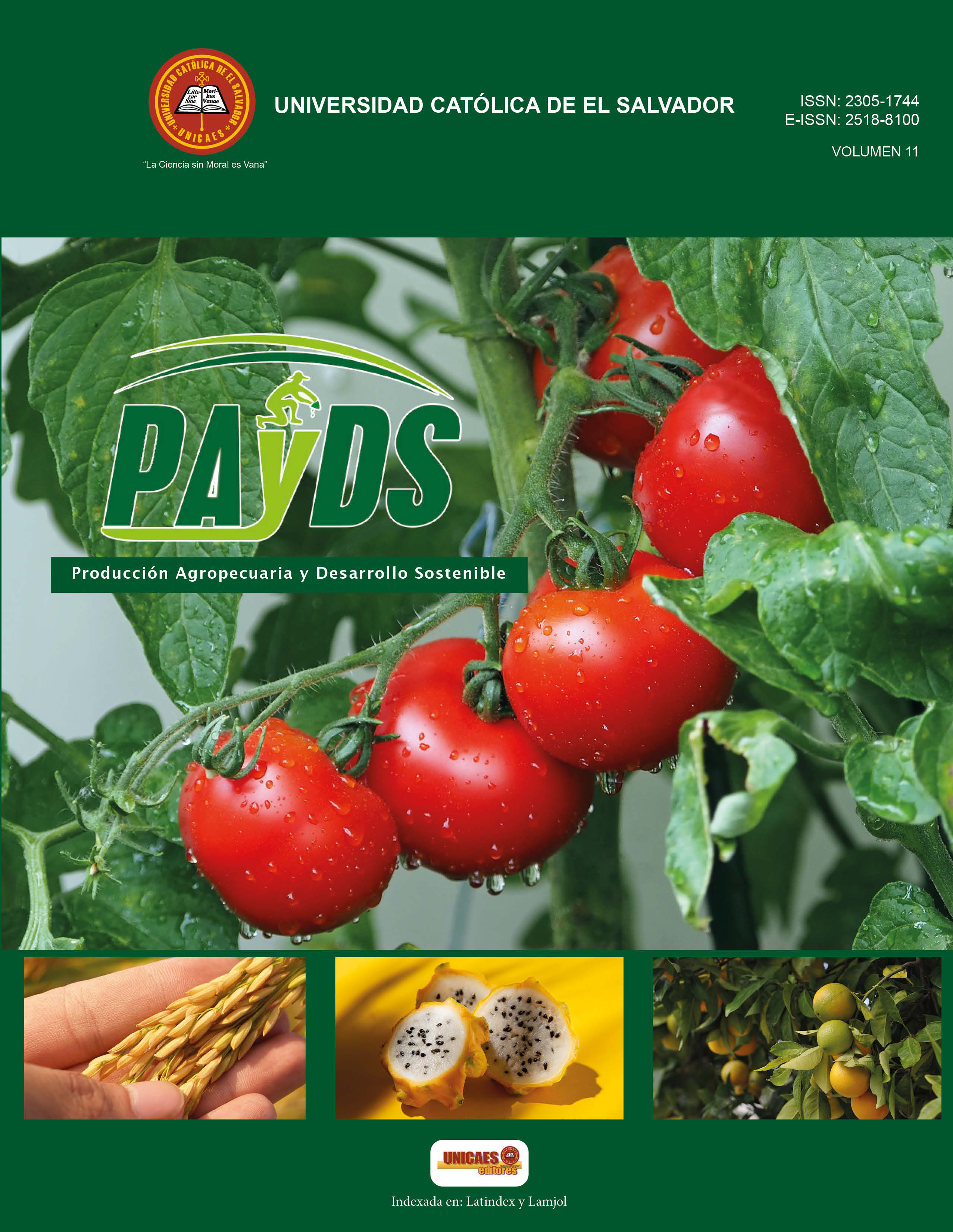Evaluation of biological, botanical and chemical products green vignette for the control of nematodes in tomato crops (Solanum lycopersicum)
DOI:
https://doi.org/10.5377/payds.v11i1.15221Keywords:
Soil phytoparasites, nematodes, tomato cultivation, Verango, FaisenonemaAbstract
In this experimental trial, the effectiveness of commercial products for the control of soil phytoparasites (Nematodes) was evaluated in the period from February to April 2022. This was carried out at the San Andrés Experimental Station #1 of the National Center for Agricultural Technology and Forestry "Enrique Álvarez Córdova.
The products evaluated were: Treatment 0 (absolute control), as control treatment; Treatment 1 (Nimitz), as green band chemical treatment; Treatment 2 (Faisenonema), as a biological treatment; Treatment 3 (Neem-X), as a botanical treatment and Treatment 4 (Verango), as a synthetic green band treatment. The latter covered the identification and quantification of plant parasitic nematode populations at three times: 70, 90 and 110 days after sowing.
The identification and quantification of nematodes was carried out in the Plant Parasitology Laboratory of the National Center for Agricultural and Forestry Technology "Enrique Álvarez Córdova". The extraction of the populations was carried out by means of the method of centrifugation and flotation in sugar solution. The results of the trial showed that the treatments evaluated for the control of phytoparasitic nematodes in tomato crops were effective on the populations; mainly Verango and Faisenonema, with an effectiveness percentage of 86.63% and 75.73% respectively. However, the economic factor is a very important point to take into account in the use of these treatments.
Downloads
565
Downloads
Published
How to Cite
Issue
Section
License

This work is licensed under a Creative Commons Attribution-NonCommercial 4.0 International License.
© Producción Agropecuaria y Desarrollo Sostenible
Copyright of the articles is transferred to the journal Producción Agropecuaria y Desarrollo Sostenible
As a user of this journal, you have:
- Open access to consult the information contained in this issue
- Permission to copy, distribute, display, perform or combine past practices in the use of information, provided it is strictly non-profit.
This journal uses a CC BY-NC license





